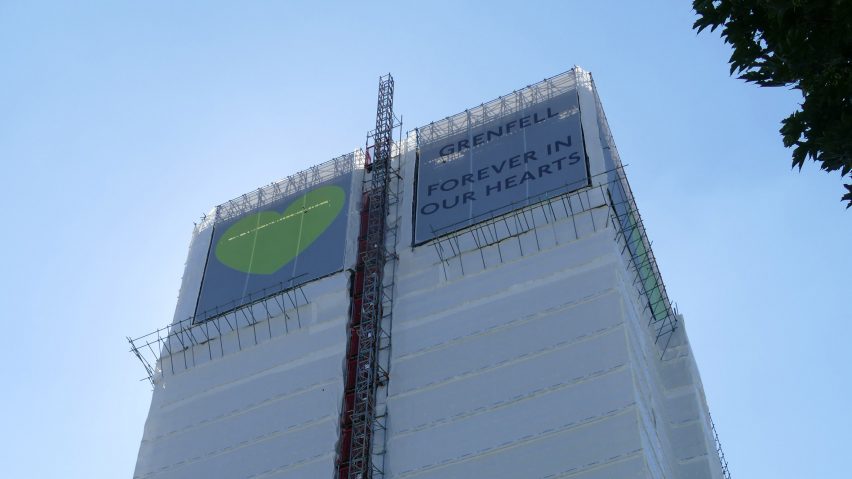The UK government was informed that the type of cladding installed on Grenfell Tower should "never ever be used" on high-rise buildings 15 years before the block was destroyed in a fire that claimed 72 lives, according to evidence presented at the inquiry into the disaster.
The inquiry was informed that the polyethylene-cored aluminium composite material (ACM) cladding that was used on Grenfell Tower's facade was subject to a government-funded safety test in the summer of 2001.
The panels failed dramatically and the test had to be stopped early as 20-metre-high flames rose from the test rig after just five minutes.
Government officials were made aware of the test in September 2002 – 12 years before ACM was selected for Grenfell Tower and 15 years before the deadly June 2017 fire. However, no warning was passed on to the construction industry.
Panels "should never ever be used"
Giving evidence to the inquiry this week, Dr Debbie Smith, former managing director of the Building Research Establishment (BRE), which carried out the tests, was questioned about its implications.
She said that at the time the government understood that ACM panels should not be used on high-rise buildings.
"Casting your mind back to September 2002, as best you recall it, were you in any doubt in your mind that the government understood, so far as you knew, that ACM panels with a polyethylene core should never ever be used above 18 metres?" asked inquiry lead counsel Richard Millett.
In response she said, "within that context of Fire Note 9 [BRE's testing method to assess the fire performance of external cladding systems], yes."
The results of the test were never published by the government and only became public via a leak to the BBC in 2021, four years after the Grenfell Tower fire.
Phase one of the inquiry has already established that the ACM panels used on Grenfell, manufactured by global conglomerate Arconic, were the "primary cause" of the fire's rapid spread across the building's facade.
The BRE had been commissioned to carry out tests on a variety of different cladding systems, including polyethylene-cored ACM, following major facade fires at Knowsley Heights in 1991 and Garnock Court in 1999.
Eleven of the 14 systems tested failed, but the ACM was the worst performer despite meeting official "Class 0" requirements for use on high-rise buildings at the time.
In 2006, building codes guidance was tweaked to require external insulation and "filler material" to meet stricter "limited combustibility" fire standards.
UK risked becoming "dumping ground"
The government has argued that "filler material" here referred to the core of a cladding panel, but industry and experts have disputed that claim.
A year after the Grenfell Tower fire in 2018, the guidance was changed again to clarify that "Class 0" materials should not be used in external wall surfaces.
Yesterday, the inquiry saw evidence that the government was warned in 2002 and 2003 that the UK risked becoming a "dumping ground" for inferior construction products if it did not drop Class 0 and transition to tougher European standards.
The inquiry had previously seen a 2011 internal email from a France-based manager at Arconic acknowledging that the type of panel used on Grenfell "has a bad behaviour exposed to fire". The manager added that the manufacturer "can still work with national regulations who are not as restrictive".
In its current module, the inquiry is examining the role of the national government in the events leading up to the Grenfell Tower fire.
Delivering its opening statement to the module, the government apologised for failing to properly oversee the building inspector system, but did not acknowledge flaws with guidance or regulations.
The inquiry continues, with evidence from Anthony Burd, a former civil servant involved in fire safety.
The images are courtesy of the Grenfell Tower Inquiry.

